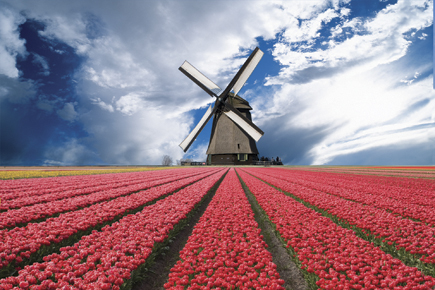Leading Lines; Direct The Viewer’s Eye
One of the things that makes a photograph successful is that attention is directed to the subject. This can be done with good lighting, muted backgrounds, or graphic design. An important design element that directs our attention into the heart of a picture is called a leading line. This is a line that usually begins at the bottom of the composition and extends into the heart of the scene, bringing with it our eye. This line can take many forms. It can be railroad tracks, a line of colorful flowers, a split-rail fence, a gravel road, and so many other things.
 |
|
|
Distant Draw
The rows of tulips (#1) presented me with dramatic and colorful leading lines when I was in Holland, and the striations in sandstone (#2) that I found in southern Utah do the same thing. They draw our eyes into the distance or into the heart of the picture in a very engaging and artistic way. In a very different way, the fallen tree I photographed in an Irish forest (#3) visually pulls us into the forest. In this case, the line starts from the upper left corner instead of the lower portion of
the image, but the effect is identical.
 |
|
|
Line And Depth Of Field
When you compose a picture such that it has a defined leading line, I feel it’s important that you have complete depth of field. The foreground portion of the line should not be soft and similarly the background should be sharply defined. That only makes sense, since the point of the leading line is to direct our attention to the subjects in the distance, and what’s the purpose of doing so if those subjects are not sharp?
 |
|
|
Therefore, you should choose small lens apertures in the f/16 to f/32 range, and that will almost always require a tripod. The reduced size of the aperture means that the amount of light is less, and therefore to maintain the same correct exposure the shutter has to be open longer. A longer shutter speed means that you will take a blurred picture unless the camera is motionless during the exposure. And that, in turn, means that a tripod is essential.

















































